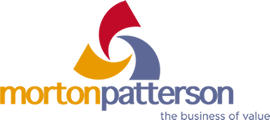Several years ago I saw a documentary called ‘Can’t Read, Can’t write, about helping adults who had spent up to 30 years of their life unable to read or interact with the world like many of us take for granted.
One of the students (Linda) dreamed of being able to read Shakespeare, but could not grasp the method the teacher was using and burst into tears of frustration.
The turning point came when the teacher realised that his method of teaching was mainly visual, but Linda was a kinesthetic learner.
She learns through feeling and touch. When she started to play with the letters on the floor to assemble words and could ‘feel’ the letters and the words, she understood. She saw the word, felt it and then interpreted it.
Often there are misunderstandings with others because we do not understand how they learn.
In his book, Frames of Mind, Dr Howard Gardner cites seven types of Intelligences or ways in which we learn, called 7 learning styles, as an insight to understanding others and at the same time, you may recognise which of these reflect you.
Verbal:
Very good at explaining things and like writing and reading, probably good at games like scrabble and read lots of books, newspapers and magazines. Could be a very good presenter in a team.
Visual:
See things clearly in the mind, and probably draw ideas on paper and find it easy to visualise things without a physical image to work with. In a meeting, you would draw out the situation or problem for everyone to understand. I had a manager whom the minute he wanted to explain something he would explain it graphically.
Physical:
They learn best by doing, are very proactive and just want to jump in and get started. Love activity or handiwork – gardening, sculpture, model building. For a team presentation, they would choreograph the presentation or prepare the handouts or the workbook.
Musical:
Remembers music and lyrics easily, has a natural sense of timing or rhythm, notices different sounds – birds, the tone of someone’s voice and could easily be distracted by sounds.
Mathematical & Logical:
More to do with numbers and designs; problem-solving and analysis. They like things to be in order, and arrange things logically. In a team, a person with this intelligence would be great at having responsibility for putting flowcharts, graphs and statistics into a logical sequence.
Introspective:
Enjoys quiet time to be alone in thought, likes to daydream about new ideas and explores feelings and thoughts. Very reflective and thoughtful. Working with this kind of person, after a meeting, they may come to you with a realisation having had time to reflect. Don’t look for quick answers. They work very well on their own and therefore do not need to have a strong degree of team contact to be productive.
Interpersonal
Get on really well with people, can mediate arguments, and is an excellent communicator. Would be great at welcoming people (networking and working the room) and would do well at facilitating question and answer sessions. Sensitive to others, and likes contact with people, teams, committees and social events. These people learn from being in sociable environments.
Linda’s ‘smart’ was physical, her strength was learning through actually spending time with the letters, holding them, feeling them and working with them.
We are all intelligent in different ways and understanding the strengths of others could give you a sense of what you do well, what you enjoy most and where your greatest contribution could come from.
As a team leader or manager– understanding how everyone operates would give you a great insight into how to get the best from them.
Listen and observe your colleagues, friends and family understand the language they use and how they learn, and also see which one reflects your personality.
I’m a visual and auditory learner, how do you learn best?
